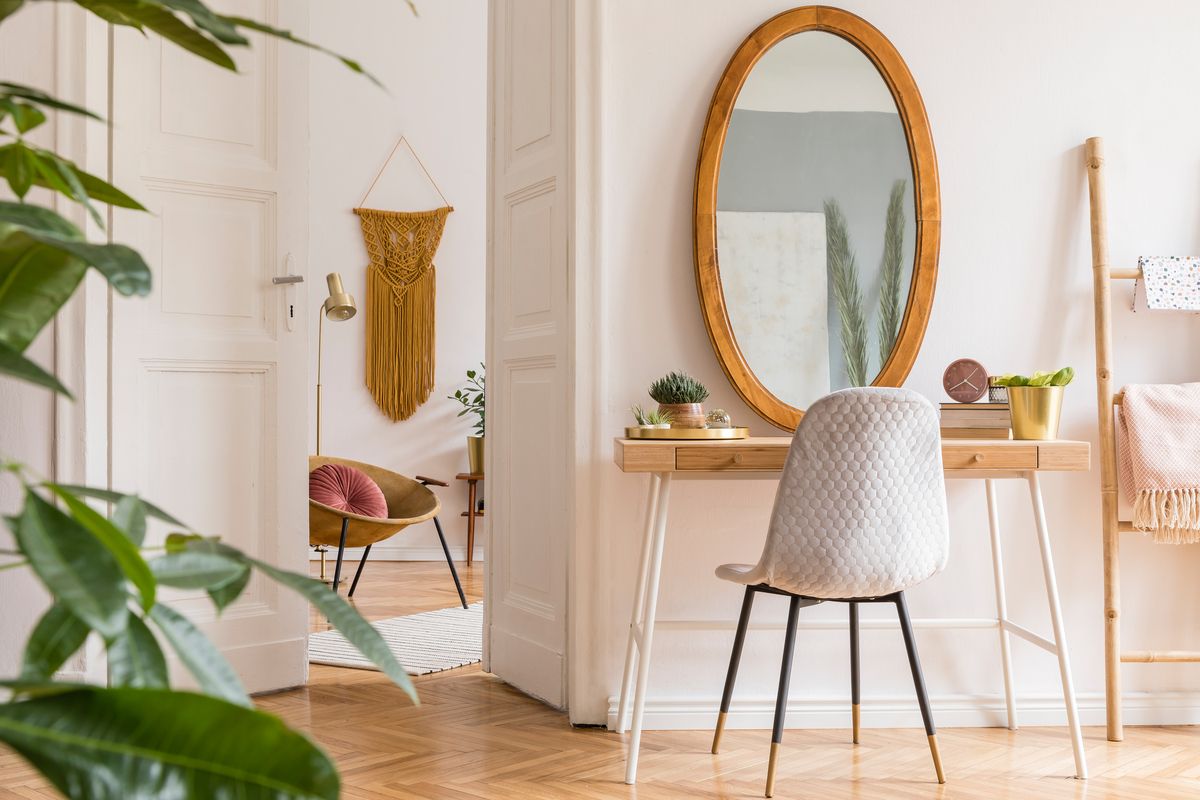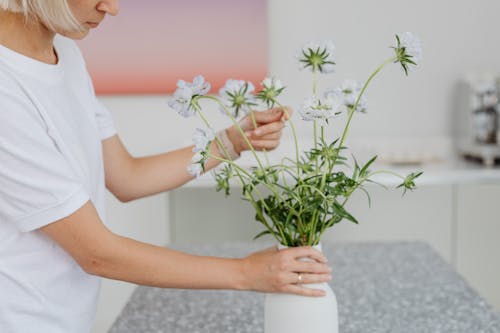
If you’re wondering how to become a minimalist, chances are you’re thinking you’d better start by decluttering. You’d be correct. Decluttering so that your home has less stuff is crucial to the minimalist lifestyle. When people are learning how to become a minimalist, it’s often because they’ve read about the many benefits of living a minimalist lifestyle. It’s more eco-friendly, it’s easier to tidy your home when you’re a minimalist, and you save time and energy, because things are easier to find.
Chances are you’ve packed up your home to move into a new house or apartment, at least once in your life. And as we engage in the process of moving, it’s common to realize we have so much stuff – too much stuff. It’s often stuff you forgot you had, or haven’t used in ages. When you’re moving, that’s a great time to sell or donate the items you don’t need.
Cleaning up like this actually feels as if you’ve detoxed your life. In the end, you wind up only taking your essentials and valuables, and you don’t have more belongings than you need.
In the United States alone, statistics reveal that 1 in 4 people have a problem with excess clutter. Unfortunately, studies assert that a chaotic environment potentially creates vulnerabilities and could perpetuate a chaotic frame of mind.
Excess consumption of belongings you don’t need can easily result in a messy home, undue stress, and may even result in credit card debt. If your material possessions are weighing you down, it’s time to decompress, declutter, and learn how to become a minimalist. Living a cleaner, simpler and more purposeful lifestyle may feel more rewarding, as it allows you to live with more intention. It’s no wonder that minimalist living or minimalism is a growing trend.
Many people have found that after learning how to become a minimalist, they save money by not needing as much space. Many are downsizing, living in tiny houses, and owning fewer things. Many people have come to realize that less is more.
Tips on How to Become a Minimalist
Fortunately, you don’t have to live in a tiny 300-square-feet house to give minimalist living a try. Minimalism is not about merely surviving on the bare essentials, living in an empty house, or being painfully frugal that you no longer invest in anything. Instead, it is a lifestyle and a philosophy that emphasizes living with less, so you can appreciate more. You don’t buy things you do not need, which will just end up purging later. You can incorporate minimalism ideals into your home, wardrobe, schedules, and even relationships.
According to Joshua Becker, author of The Minimalist Home and blogger at Becoming a Minimalist: “Minimalism is the intentional promotion of the things we most value in life by removing anything that distracts us from it.” Minimalist living is a movement that allows you to lead a simpler but more purpose-driven life.
Below are some tips on how to become a minimalist:

1. Declutter and Keep Essentials
You likely have many items in your home that are duplicate items, or unnecessary items you don’t really need. This is clutter. A minimalist’s home is free from clutter because everything in their space takes up space for a reason. Minimalists are selective about their belongings. If you want to learn how to become a minimalist, you have to learn how to cull and declutter. Since minimalist living is highly intentional, it involves decluttering to stay organized and tidy. If you’re new to this lifestyle, you may find it difficult at first, to learn to let go of possessions like your book collection, highschool memorabilia, and so on. It’s okay to keep some memorabilia, but minimalists are very selective about what they put in their ‘keep’ pile.
As you start to purge, it would help to evaluate which belongings are truly essential and meaningful. Marie Kondo, a minimalist guru who started a decluttering craze around the globe, advises to ask yourself if an item sparks joy. If an item doesn’t bring value to your life or bring you joy, and rather distracts you from creating a home you want, let it go.
Another good rule to follow if you’re having trouble deciding whether to keep or discard something: ask yourself if you’ve used it in the last 6 months to a year. If you have not, experts believe that you are not likely to use them. Lack of use suggests that you don’t need the items in the first place. After analyzing what to do with your things, you can put them in the following piles:
- Donate gently-used clothing and appliances
- Sell or consign valuable items
- Discard broken or overused items
- Keep essentials and items you love
2. Consider a Capsule Wardrobe
Most people with a closet full of clothes tend to almost always wear the same thing over and over again. Most of what’s hanging in your closet doesn’t get worn.
Does getting dressed feel chaotic? Do you feel like you have nothing to wear, even though your wardrobe is full of clothes? Simplify your life, and create a capsule wardrobe.
A capsule wardrobe is a small collection of high-quality, timeless, and easy to mix-and-match items, and basic neutrals. A capsule wardrobe might be all you need, and it will only contain select clothing items such as:
- Neutral-colored tops that are well-cut and quality fabric
- Black and gray skirts that can mix and match with any top
- Tailored blazers and trousers that never go out of style
- Classic denims
- High-quality shoes
Neutral colored clothing items in taupe, white, black, and shades of gray will always be easy to quickly pair an outfit that goes together. A capsule wardrobe will simplify your life, clear up space in your closet, and help you save time getting dressed.
Create a closet around your lifestyle, and include clothing items that fit well, and make you feel confident. As a result, you wouldn’t mind mixing and matching, and wearing the same items on repeat. The end goal is to create an effortless style that takes the fuss out of dressing up.

3. Devise a Game Plan
It can be difficult to learn how to become a minimalist if you currently have way too much stuff. You may feel overwhelmed and have no clue where to start. Attempting to declutter your home in one day is not feasible. Instead, make a game plan by focusing on one room at a time and giving yourself a schedule. Start with the easiest room first because finishing this off will inspire you to get through with the rest of your house.
After choosing a room to focus on, begin tackling visible areas like tables, shelving, and items on the floor. From there, move on to hidden areas like cabinets, closets, and drawers. When you’re methodical about decluttering, you can see your progress and feel less overwhelmed.
If you feel that you’re not very good at being ruthless while decluttering, and you find it difficult to let go of items, you may need to call in an accountability partner. Get a family member or friend to supervise you while you declutter, encouraging you to get rid of unneeded items, and maybe they could help you transport items to a local donation center.
4. Set Up a Regular Clean-Up Routine
Messiness creeps up on you when you don’t have good habits. After you’ve decluttered your home, it’s important to keep your home and life that way for the long haul. Since people live in your house, it’s inevitable for it to get messy. The key here is to nip small messes in the bud before they escalate, by having regular clean-up routines as part of your habits.
Teach your family members, especially kids, how to pack away their toys, books, towels, and clothes after use. Some high-traffic spaces like the kitchen counter and main entryway need attention. Other areas of your home such as guest rooms or the basement can get by with less routine cleaning or perhaps even just seasonal care.
5. Resist Sales, No Matter How Amazing The Discounts
With minimalist living, you focus on buying and possessing only essentials. Part of learning how to become a minimalist is learning how to resist temptation when stores are having big sales. When you attend a sale, you’ll bring home a bunch of junk you don’t need.
The temptation of sales can lessen if you:
- Unsubscribe to promotional emails.
- Enable ad blockers on your computer.
- Discard junk mail.
- Ask yourself if you need this item.
Minimalism in a way rejects materialism because you don’t get frazzled by every sale you hear about. You don’t fear missing out, because you’ve set your priorities. This philosophy will help you fine-tune your tastes because you end up investing in items that make you happy and provide real value.
Is Being Tidy and Organized Genetic?
Sometimes, it runs in the family to be messy, or to be very tidy. A DNA test such as the at-home DNA test from CircleDNA will tell you if you’re more or less likely to be obsessed with washing and cleaning. Although it’s much easier to be a minimalist if you’re naturally a very tidy person, anyone can learn how to become a minimalist.







Comments are closed.